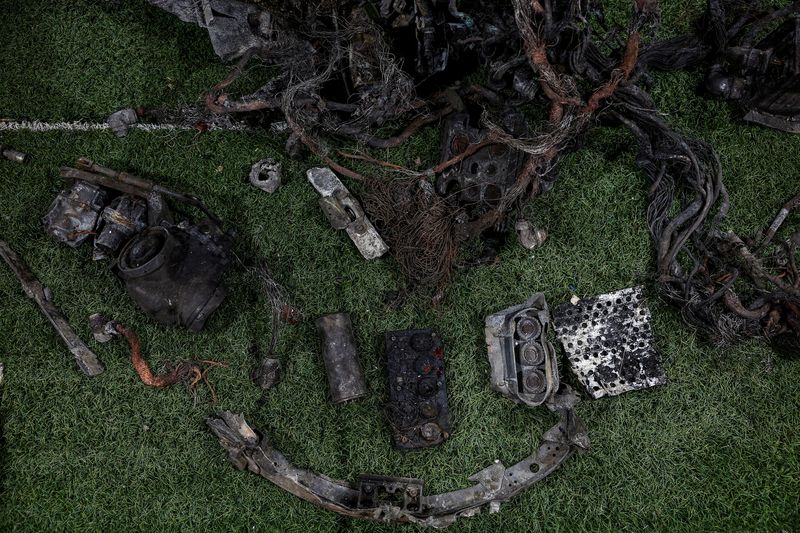By Tom Balmforth and Gerry Doyle
KYIV (Reuters) - A new ballistic missile fired by Russia at the Ukrainian city of Dnipro last week carried multiple warheads but no explosives, and caused limited damage, two senior Ukrainian government sources said.
Their comments appeared to confirm the Kremlin's own description of the weapon's use last Thursday as a warning to the West after the United States and Britain allowed Ukraine to fire their missiles into Russia.
The two sources provided more details about the new weapon as Western experts try to learn more about what U.S. officials say was an experimental intermediate-range missile.
Intermediate-range ballistic missiles are typically meant to be used for long-range nuclear strikes on targets thousands of kilometres away.
One of the sources said the missile was carrying dummy warheads and described the damage caused as "quite small".
The second source said: "In this case, (the missile) was without explosives...There were no types of explosions like we expected. There was something, but it was not huge."
Russian President Vladimir Putin said the Oreshnik intermediate-range ballistic missile strike was a successful test and that it reached its target - a missile and defence enterprise in the Ukrainian city of Dnipro.
Ukraine has seldom disclosed information about airstrikes on military targets since Russia's February 2022 invasion.
Putin also said Russia would continue to test the Oreshnik in combat and that it had a stock ready for use. Kyiv has said Ukraine is already working to develop air systems to counter the weapon.
U.S. officials have said Russia probably possesses only a handful of these missiles, which Western experts say appears to have been derived from the RS-26 intermediate-range ballistic missile.
Leaving out the explosives in a "reentry vehicle" - the heat-shielded part of the missile that carries the warhead - leaves room for instrumentation, which countries testing missile designs can use to measure performance, experts say.
It is not publicly known whether the Russian warheads carried such gear.

The RS-26 has a reported range of more than 5,000 km (3100 miles) although the missile that struck Ukraine from the Russian region of Astrakhan region flew only about 700 km.
"I would say this is an incredibly expensive way to deliver what is probably not that much destruction," said Jeffrey Lewis (JO:LEWJ), director of the East Asia Nonproliferation Program at the James Martin Center for Nonproliferation Studies at the Middlebury Institute of International Studies in California.